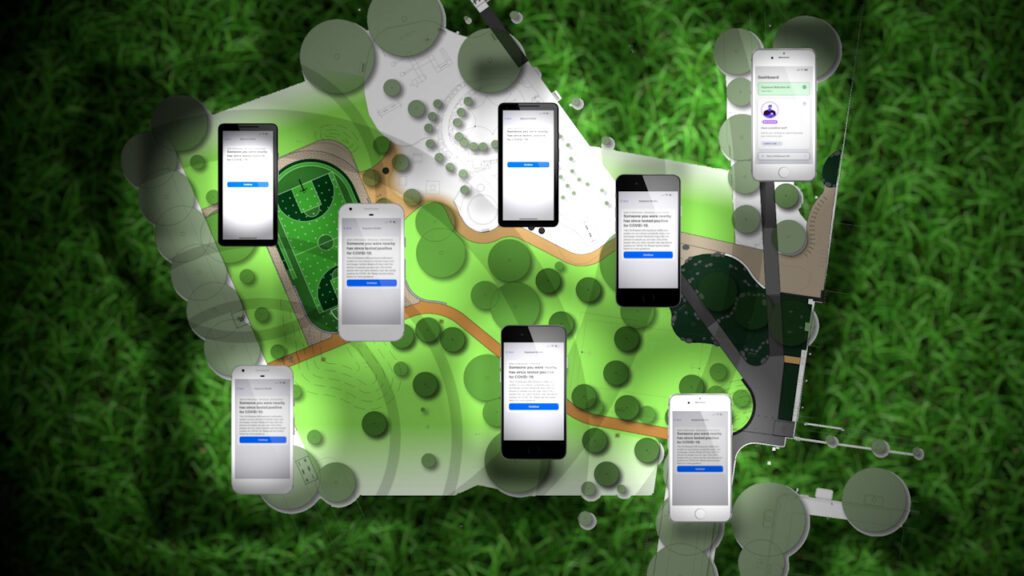Minnesota officials say COVID tracking app is a critical tool to fight the pandemic. Few people actually use it.
Technology touted by state officials to help slow the spread of COVID-19 is rarely being used by the millions of Minnesotans who have it on their phones, an analysis of state data shows.
The state launched the “COVIDAware MN” app in November 2020. The app notifies an individual that they may have been exposed to someone who tested positive for COVID-19.
But the effectiveness of the app hinges on the person who tests positive being willing — and able — to enter a code generated by the state health department.
In the year and a half the technology has been online, the state generated 653,362 codes connected to positive COVID test results. Data analyzed by 5 INVESTIGATES shows only 57,402, less than 10%, were put back into the app.
The user rate was even worse when the Omicron wave hit Minnesota in January. State data revealed the week after cases peaked, only 4% of the codes sent to COVID-positive patients were used in the app.
After the Omicron wave peaked in Minnesota in January, data revealed only 4% of the codes sent to COVID-positive patients were used in the app.
Despite the low participation, state officials defended the technology.
“We’re pretty confident, certainly in Minnesota, that this along with other measures have resulted in two really, really critical things: saving lives and reducing the spread of COVID-19,” said Tarek Tomes, commissioner of the Minnesota Department of Information Technology, or MNIT.
To date, more than 2.7 million people in Minnesota opted-in by either downloading the app or enabling exposure notifications on their Apple devices.
The code never came
But Andrew Loo said the app failed to do what the state promised.
As a cancer survivor, Loo had downloaded the app as soon as it was made available because he said he wanted to protect himself, his wife (who works in healthcare), and anyone else they came in close contact with.
“I had hopes that it would help people out, but it just didn’t work out that way,” Loo said in an interview with 5 INVESTIGATES.
After his positive COVID test, Loo expected to get a text containing a code to put into the app. When he didn’t get that text, he called the Minnesota Department of Health.
“They said that I’d receive a code, and I didn’t,” he recalled. “I called again, and they said it’ll be on the way.”
The code never came.
“Both of us were like, are you kidding me?” he said.
Two weeks after his symptoms first began, and frustrated with the process, Loo gave up on the COVIDAware MN app.
“By that time, I was already outside of the quarantine window,” he said. “I figured what’s the use of continuing to chase after this.”
5 INVESTIGATES confirmed other users experienced similar problems. During the Omicron wave, an individual who received a code from the health department didn’t bother putting it into the app because the text message came 10 days after they tested positive.
Tomes deferred questions about those delays to health department officials, who declined multiple interview requests on this topic.
MDH issued a statement to 5 INVESTIGATES, saying in part that since the technology was brand new, the department “had no expectations for how it would perform,” and that the demand for testing during the Omicron wave “stressed every aspect of testing systems maintained by the state and other entities, causing some test results to be provided later than would have normally been the case.”
“A tool in the toolbox”
The exposure notification technology came online in Minnesota at a time when contact tracing resources were stretched thin, and vaccines were not yet widely available to the general public.
The COVIDAware MN app doesn’t collect any personal information, a point Governor Tim Walz stressed when he announced it was available for download.
“This is an opt-in alternative,” he said during a daily press briefing at the end of November 2020. “You don’t have to put the code in your phone, and you don’t have to notify others around you. I would strongly encourage, if not beg you, please do so.”

Bluetooth-enabled phones exchange random keys when in close proximity to each other.
The app was celebrated as a low-cost, low maintenance but highly efficient way to track covid.
It was created by the state in partnership with the nonprofit PathCheck Foundation at a one-time cost of $170,000. There are no state employees assigned to maintain the app.
A year and a half later, the state now blames low usage numbers on COVID fatigue.
“You have to make things like this as easy as possible,” Tomes said in an interview. He also acknowledged the state needs to re-examine its process for issuing codes to positive COVID patients.
“One of the things that we have seen and we will continuously, relentlessly advocate for is doing everything that we can to shorten these timelines,” Tomes said.
However, the technology’s limitations raise questions about its future effectiveness. Right now, individuals who test positive on an at-home test cannot use the app.
Tomes said the state is currently exploring adding a “self-reporting” option, allowing people who test positive at home to use a code in the app without MDH verifying the result through a lab-based test.
In a statement, MDH said as the widespread use of at-home rapid testing has increased, “we are studying how to best adapt to this new reality so that COVIDAwareMN can continue to be relevant and best serve Minnesotans as it was intended.”